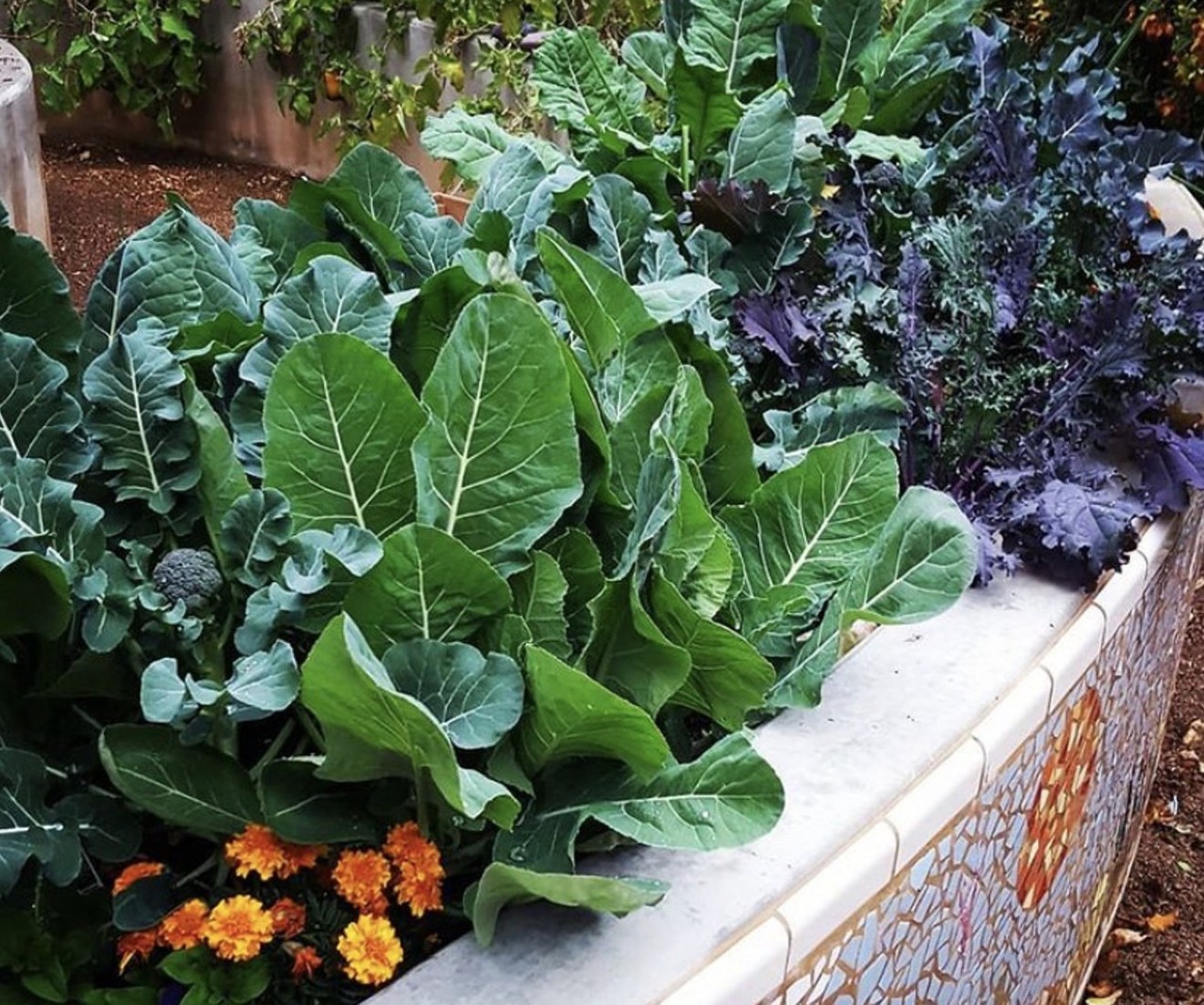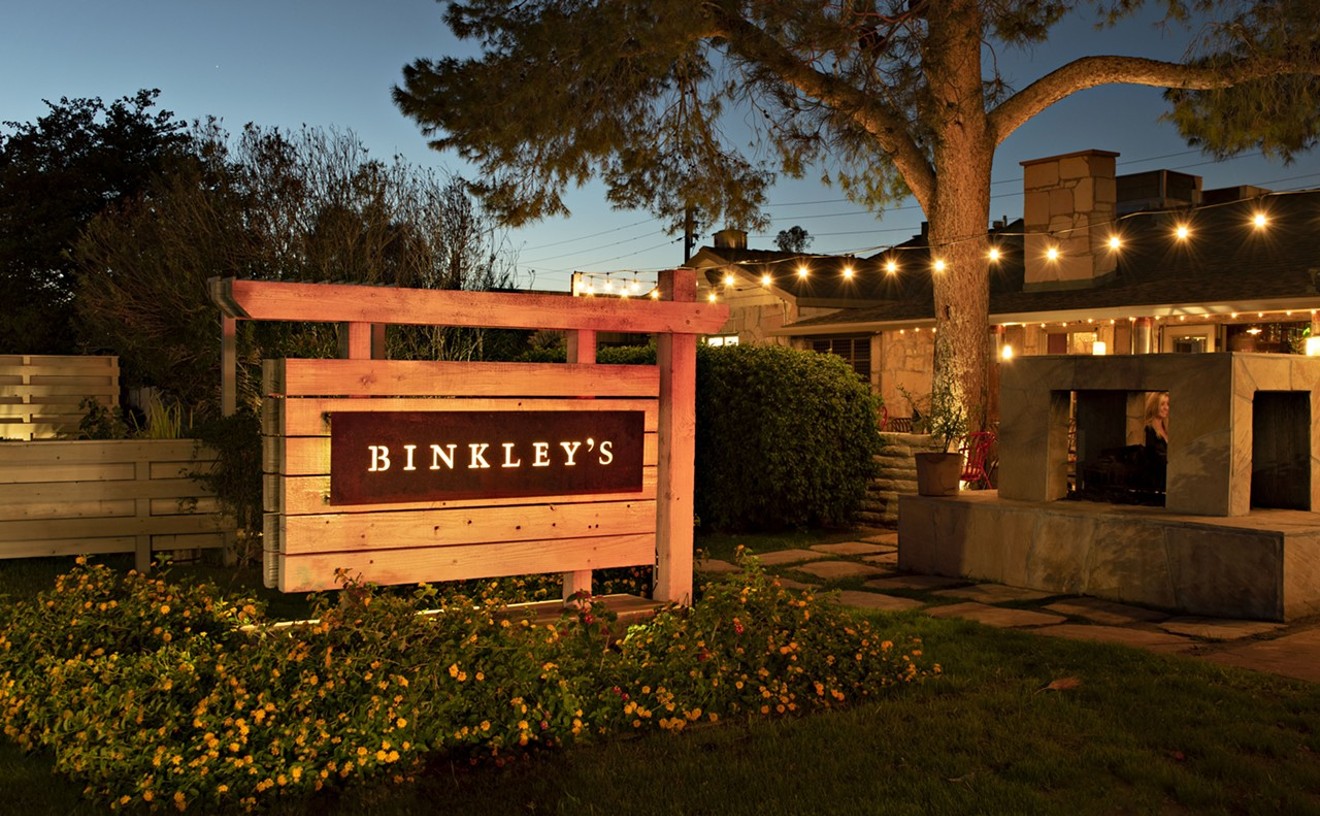As you enter the garden, sweet fragrance from the citrus blooms envelops you. Birds chirp all around. Concrete benches rest beneath plum, peach, apple, pomegranate, and kumquat trees. This is where the students do homework or journal. A raised garden (which looks like a keyhole when viewed from above) is bountiful with vegetables reflecting the children’s academic work. Two bay laurel trees speak to the Olympic crown; sugar cane to the trade triangle.
This is just the fifth and sixth-grade garden, one of the 17 gardens Ann Colleary Rodarte has created at Scottsdale's Echo Canyon School and maintains with her husband, Lou Rodarte. They both have day jobs. Working with the Edible Schoolyard Project is purely voluntary.
The Rodartes started volunteering at the school in 2003 when their daughter was in school here (though they didn't start in the garden).
Ann stayed at the school until her daughter graduated eighth grade. “Then I was diagnosed with breast cancer,” she says. “It took a year to go through a double mastectomy, chemo, and radiation. The teachers were so supportive that I decided to do something for them.”
When she was done with the cancer treatment, she contacted the principal to offer to do something for the teachers. The principal asked her to take over the gardens. She didn't know much about gardening but accepted. All the teachers wanted was to be able to see the garden from every classroom window. Ann’s first garden contribution happened during the school's remodeling around 2011.
Then she turned her attention to student nutrition.
“They didn’t listen to me when I wanted them to eat the veggies from the garden,” Ann says. “’I don’t eat seah-lad,’ they’d say.” She crinkles her nose as she quotes the kids. So, she enlisted the help of a few chefs, hoping to make the kids more interested.
Charleen Badman of the Blue Watermelon Project and Sacha Levine were the first to participate in the Chef in the Garden program. They had the kids pick herbs, then helped them make a basil dipping sauce with those herbs for sausage lollipops. Dessert was lemon verbena pot de crème. The kids loved it.
Now, every month the students can plant, grow, and harvest fruits or vegetables.
The pre-kindergarten and kindergarteners’ garden has butterfly and hummingbird habitats with a small bench for the children. Their garden has what they would eat (strawberries, peas, beans, lettuce). They taste the herbs from their garden in lemonade, butter, and bread.
Before the pandemic, they’d have Fridays in the garden. Ann would take the kids in groups of three, plant with them, review the soil and explain companion plants ("Who’s your best friend?" is a question Ann would use to introduce the concept). The kids would journal the plants’ growth.
Other gardens include a succulent wall, a desert habitat garden, and Loui’s Hope garden, which started with sunflowers in the empty post-pandemic school.
“When the kids left, I sat here and cried,” says Lou, whom the kids named Mr. Pikle (the kids' spelling when they gave him a thank-you note) five years ago because he was eating a pickle while watering the plants once.
The second, third, and fourth-grade gardens mirror the subjects they are studying. Bees happily buzz around the flowering plants. Copper pots and citrus trees represent two of Arizona's five Cs. The center garden boasts Swiss chard, broccoli, cabbage, celery, and I’itoi onions — an indigenous crop acquired from Native Seed Search in Tucson. Lou puts the garden caterpillars on sticks in the classroom. The kids watch the transitions for a few weeks and release the mature butterflies into the garden.
This is also where they held Chef in the Garden before the pandemic. A chef would stand on one side of a round concrete table, the kids would sit on the half-moon bench on the other. They’d assist the chef by cutting veggies and tastings. Among the chefs are Tamara Stanger, Danielle Leoni, Vincent Guerithault Levine, Sasha Raaj, Claudio Urciouli, Jason Raducha, and the aforementioned Badman,
The program keeps evolving. Just before the pandemic, they were learning table etiquette.
“We are moving beyond just planting and eating,” Ann says. The sixth and seventh graders are learning composting and sustainability. Lou, who started hot composting (accelerated composting done by optimizing bacterial activity), connects the process to the kids’ learning life cycles. He also uses the phrase “party in the soil” to discuss the role of insects and microbes in plant growth.
The Rodartes are changing things here. Teachers at Echo Canyon are expected to use the gardens (they don't necessarily need to know anything about it, just be open to it). One of the products of this school is Ian Beger, the agronomist at Castle Hot Springs, a luxury resort in Morristown, Arizona.
And how to measure the success of these gardens? Gone are the days of kids crinkling noses at salad. Now they're trying edible flowers, rockfish curry, octopus. And the big improvement: After discussing the future of the food and other protein sources, Stanger spread glazed ants on buttered garlic bread. The kids ate it.
Since the pandemic, with the help of a Neighborhood Grant from Sprouts Healthy Communities Foundation, Ann puts together a monthly box for each student with a seed, a history sheet, a recipe, and a YouTube video link (from one of the chefs) to guide them through the recipes. It started with Chef in the Pantry, where Badman taught the kids to make pasta. The next chef scheduled to do a video is Tracy Dempsy, who will work with honey. This will continue as long as the program is funded and until they can reignite Chef in the Garden and host fundraiser dinners again.
The Rodartes welcome help on the weekends. People can sign up via the Blue Watermelon Project website. At this time, students won't be present due to the pandemic. However, once restrictions are lifted, people can join the kids and Rodartes for planting.
To keep up with the garden, follow the Rodartes on Instagram at @chef.inthegarden and @louisrodarte.
[
{
"name": "Air - MediumRectangle - Inline Content - Mobile Display Size",
"component": "18478561",
"insertPoint": "2",
"requiredCountToDisplay": "2"
},{
"name": "Editor Picks",
"component": "16759093",
"insertPoint": "4",
"requiredCountToDisplay": "1"
},{
"name": "Inline Links",
"component": "17980324",
"insertPoint": "8th",
"startingPoint": 8,
"requiredCountToDisplay": "7",
"maxInsertions": 25
},{
"name": "Air - MediumRectangle - Combo - Inline Content",
"component": "16759092",
"insertPoint": "8th",
"startingPoint": 8,
"requiredCountToDisplay": "7",
"maxInsertions": 25
},{
"name": "Inline Links",
"component": "17980324",
"insertPoint": "8th",
"startingPoint": 12,
"requiredCountToDisplay": "11",
"maxInsertions": 24
},{
"name": "Air - Leaderboard Tower - Combo - Inline Content",
"component": "16759094",
"insertPoint": "8th",
"startingPoint": 12,
"requiredCountToDisplay": "11",
"maxInsertions": 24
}
]














